2287. 7" long:
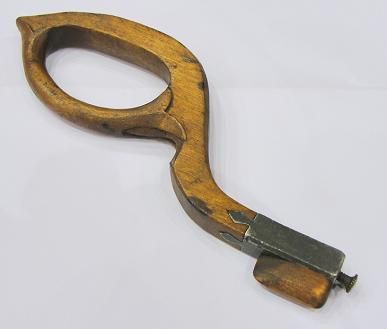
Larger image
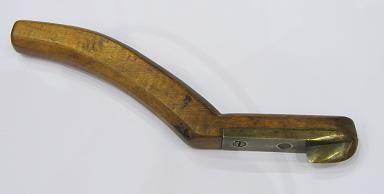
Larger image
2288. 8" diameter, take a look at Neatorama for more guesses and a chance to win a T-shirt:
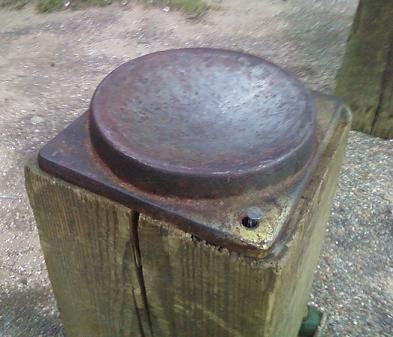
2289. 4-1/2" long, made of aluminum, sent in by a visitor:
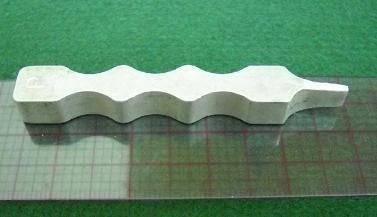
Larger image
2290. Around 15" long:
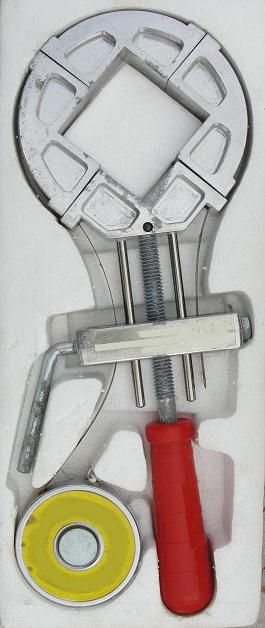
Larger image
2291. About 8" long:
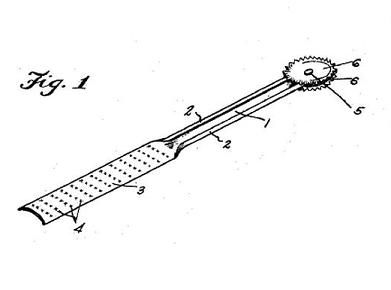
2292. 30" long:
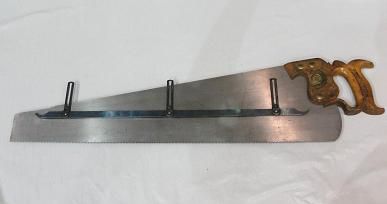
Larger image

Larger image
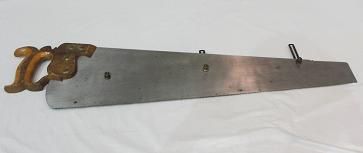
Larger image
Answers:
2287. These are both mackerel plows:
Used by New England fishermen aboard mackerel schooners in the 19th century, this unusual tool converted poor “leather-bellies” to large “Number 1” fish with a few short strokes. Mackerel caught in seines at the beginning of the season—in spring and early summer—were generally lean, dry, and tough, and not worth much at market. But fishermen found a way to plump them up to command a higher price. After splitting a scrawny mackerel down its back with a larger knife, a fisherman would make several slashes parallel to the backbone with the small blade of the plow. Like plowing furrows on land, the slashes opened the flesh, causing the fish to swell, which could bring a higher price.

Larger image

Larger image
2288. An anvil for hand forming sheet metal with a hammer, for making armor or other curved metal parts, also called sinking or doming, this is a relatively fast method but it results in stretching and therefore thinning the metal, risking failure of the metal if it is 'sunk' too far.

It's similar to a dishing stump, which is a bowl shaped depression cut into a tree stump.
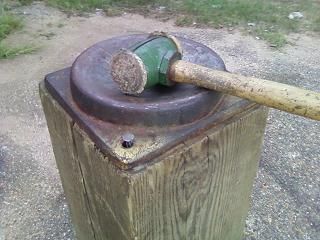
It's part of a set of three progressively more dished anvils, this is the least dished and is currently being used to form an elbow protector. When fully curved, it will be lined with closed cell foam and have leather straps attached.
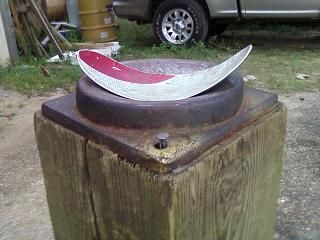
2289. A tool used for removing the locking wedge on a black powder rifle, the locking wedge connects the barrel of the gun to the stock:
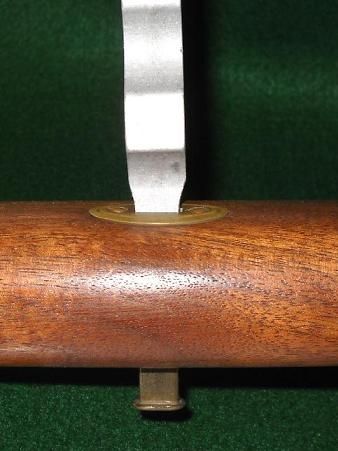
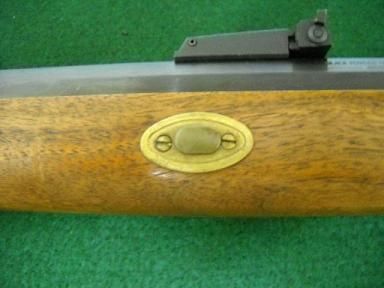
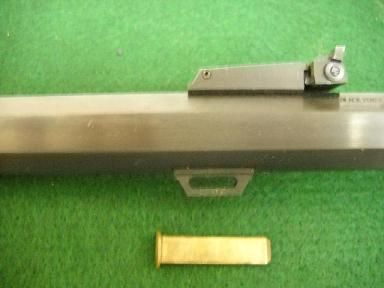
The owner of this tool describes how to use it:
"You grasp it in your hand (convenient finger grooves) and use the square end to hammer the wedge loose. You then use the chisel end to push the wedge all the way out."

Larger image
2290. A Merle adjustable corner clamp, the steel band is used to clamp picture frames, shelving, furniture, etc.
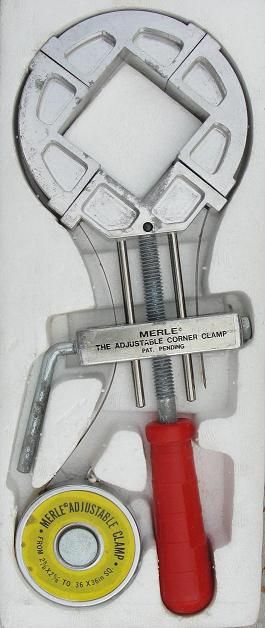
Larger image
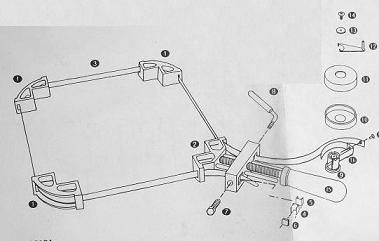
Two images from the box:
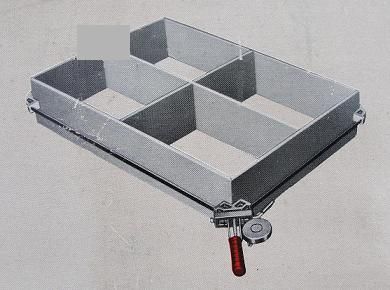
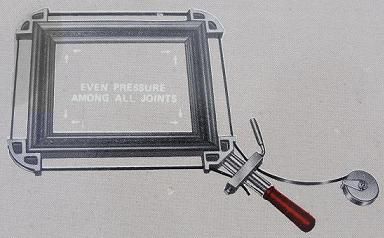
2291. A tire repair scraper from 1926, used when applying patches to tires or inner tubes, patent number 1,632,544:

2292. A Diston Gauge Saw:
Adapted to tenoning, shouldering, dovetailing, curving, cog-cutting, or any purpose where a definite depth of cut is required.
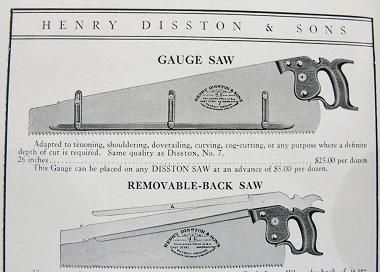
Larger image
The back saw has a stiffening rib that allows for better control and more precise cutting when making dovetails, mitres, or tenons.

Larger image
To submit photos, send them to the address in my profile.
Last week's set is seen below, click here to view the entire post.
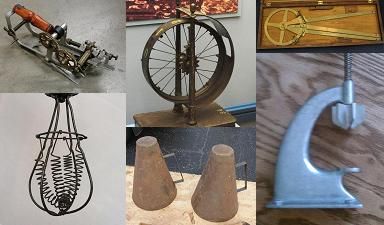
More discussion and comments on these photos can be found at the newsgroup rec.puzzles.
I think 2290 is a clamp for holding things square. If I'm right, the way it works is that the lever on the left holds or release the metal band which goes around the device and into the container at lower left. This allows you to expand the four jaws enough to go around the corners of whatever you are clamping. Pull the metal band snug, tighten the lever on the left, and then turn the handle to apply clamping pressure.
ReplyDelete2290. Emergency clean-out wrench with Teflon tape holder. The tape assures a good seal when the cap is replaced.
ReplyDelete- Edward
2288: A dishing anvil?
ReplyDelete2292. For cutting mortises in timber frame construction?
ReplyDelete2290 is a strap clamp, like http://goo.gl/Ligjx
ReplyDelete2288. I'd call it a swage. Wish I had this one.
ReplyDelete